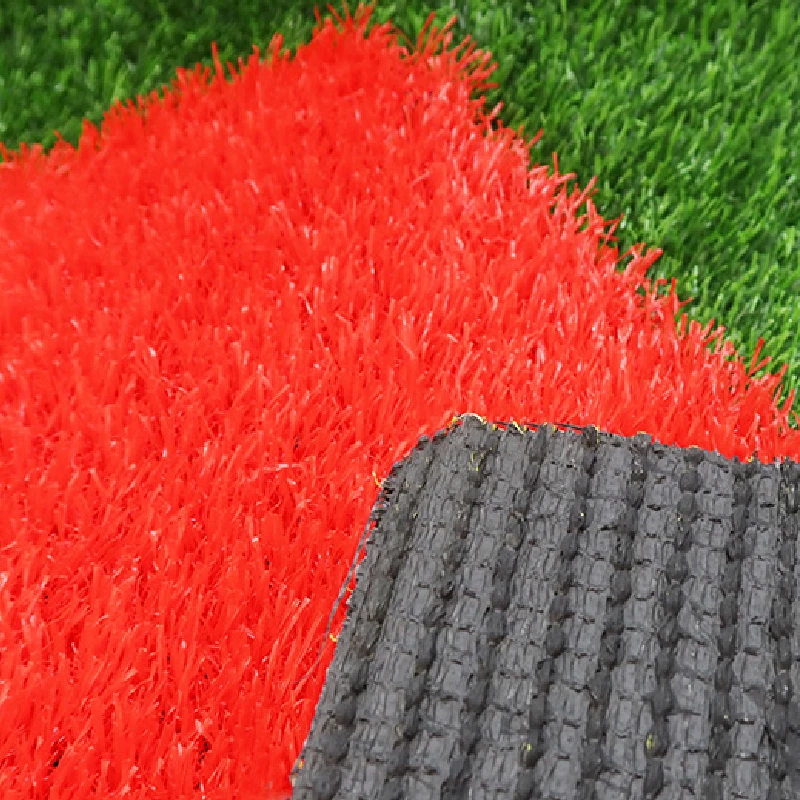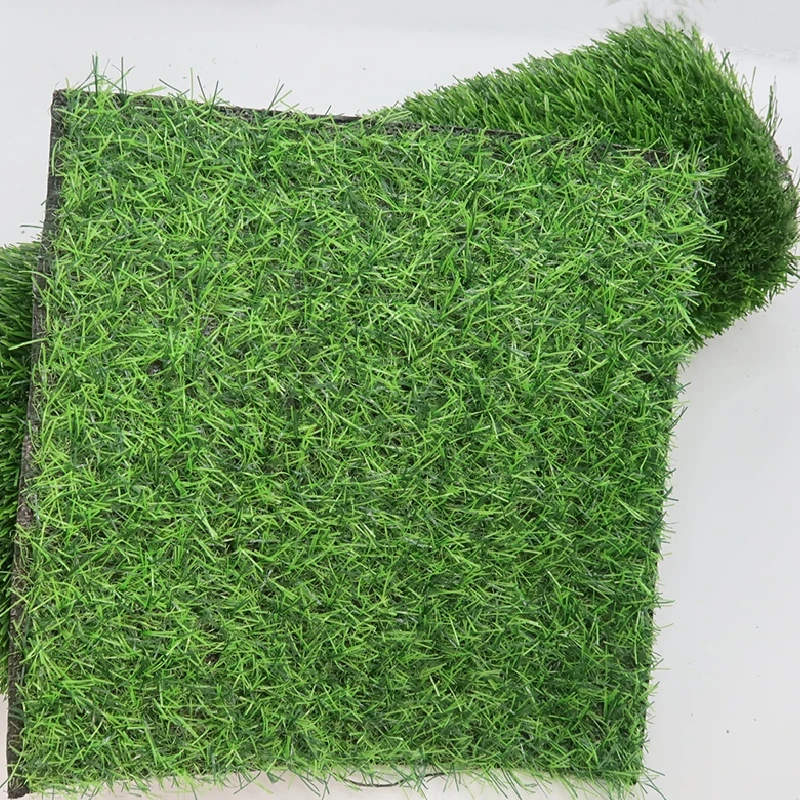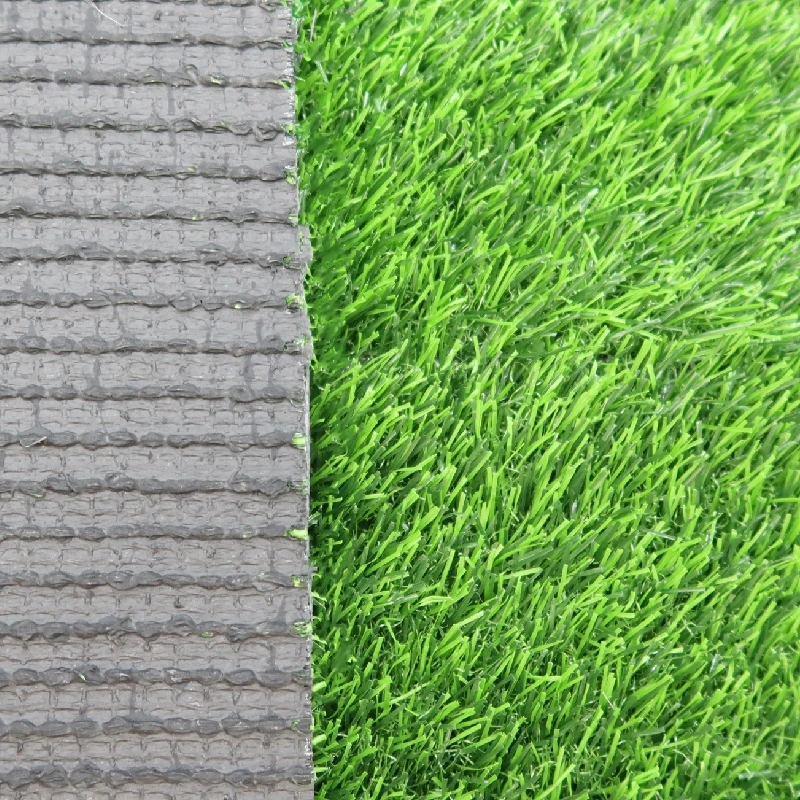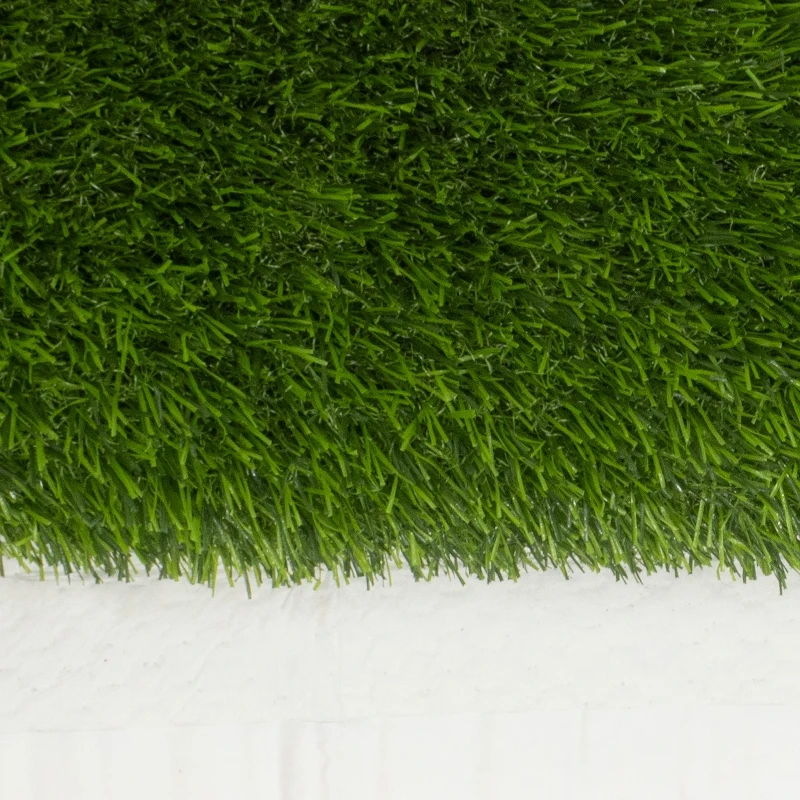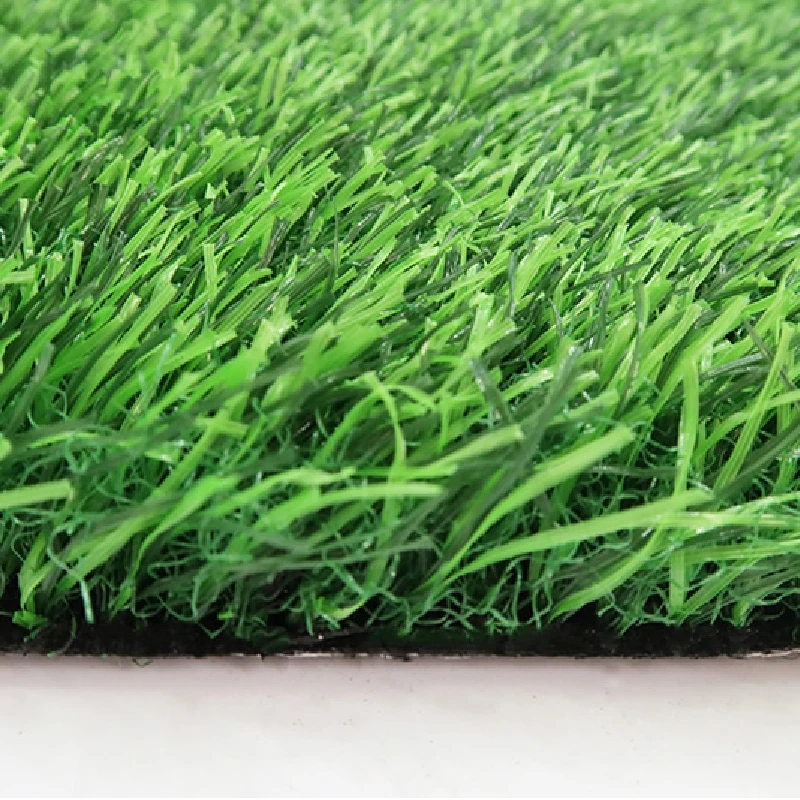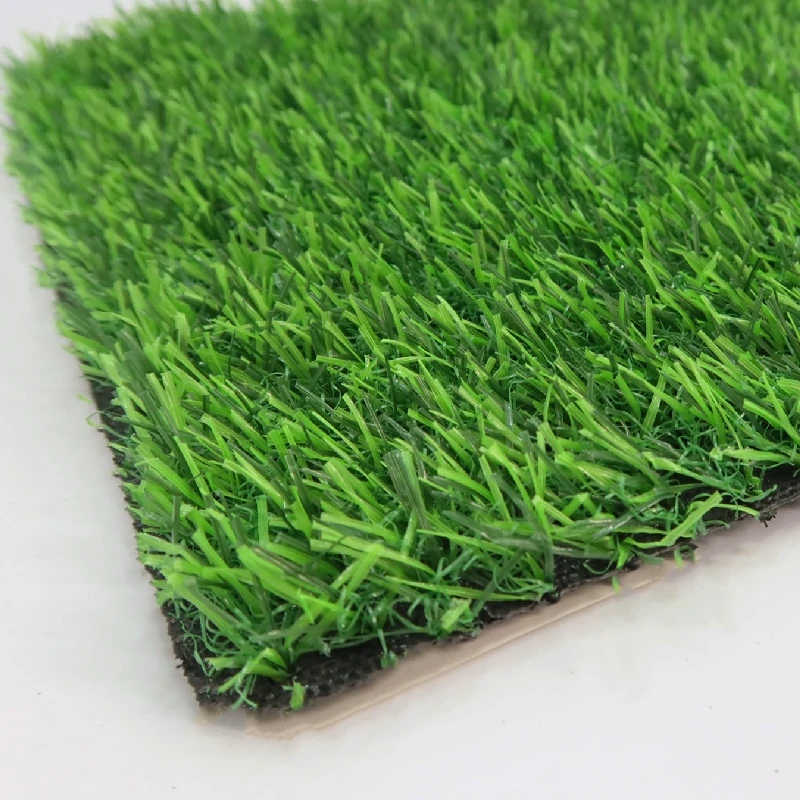Discover the Benefits of Synthetic Putting Green for Sustainable Landscaping
Nov . 20, 2025 13:58 Back to list
A Closer Look at Synthetic Putting Greens: Why They Matter Today
When you hear “synthetic putting green,” visions of pristine, maintenance-free putting surfaces might pop up. But beyond the obvious delight for golf lovers, synthetic greens have emerged globally as a smart, sustainable solution for landscaping — and not just for elite clubs. They’re increasingly critical in environments where water conservation, durability, and cost matter immensely. Whether it’s residential backyards in drought-prone regions or public spaces in urban centers, understanding synthetic putting green technologies gives us insights into smarter landscaping strategies that blend innovation with environmental responsibility.
Mini takeaway: Synthetic putting greens aren’t just for the golfing elite; they're a practical response to water scarcity and urban landscaping needs worldwide.
The Global Landscape: Why Synthetic Putting Greens Are More Relevant Than Ever
Water scarcity affects over 40% of the world’s population, according to the UN Water Report (2023), and outdoor water use for lawns and greenspaces makes up a sizeable chunk of that. In places like California or Australia, restrictions on irrigation have pushed homeowners and businesses to rethink traditional grass. Here’s where synthetic putting greens come into play.
Globally, the turfgrass industry generates significant greenhouse gas emissions through mowing, watering, and fertilizing. ISO 14001 environmental standards encourage sustainability in landscaping — and synthetic turf meets many of these green objectives by cutting water use and eliminating fertilizer runoff.
Yet, there are challenges. For instance, heat retention (yes, synthetic turf can get hot under the sun) and concerns about microplastics are on the industry's radar. In response, recent developments have focused on cooler materials and eco-conscious infills.
Mini takeaway: The soaring need for water-efficient landscaping worldwide — especially in urban and drought-sensitive areas — has driven the adoption of synthetic putting greens as a practical alternative.
What Exactly Is a Synthetic Putting Green?
At its core, a synthetic putting green is a man-made turf that mimics the look and feel of natural grass on golf putting surfaces. Made primarily from polyethylene or polypropylene fibers tufted into a backing, it’s designed for smoothness, ball roll accuracy, and durability.
It’s widely used in residential, commercial, and sports settings. Beyond golf, these greens function as drought-proof lawn alternatives in places that face watering restrictions, and even as training surfaces for schools and clubs.
Oddly enough, synthetic putting greens combine advanced manufacturing—think UV stabilization, drainage layers, and anti-microbial treatments—with surprisingly simple installation practices, making them accessible and practical worldwide.
Mini takeaway: Synthetic putting greens replicate real grass with technical layers engineered for performance, durability, and low maintenance.
Breaking Down Core Components of Synthetic Putting Greens
Durability
One of the standout features is durability. Many modern synthetic greens come with UV resistance and anti-wear coatings to withstand heavy use and weather extremes without fading or tearing easily.
Realistic Turf Fiber
Manufacturers have fine-tuned fiber shapes and lengths for the authentic feel golfers expect. Ribbon-shaped polyethylene strands, for example, create a natural blade-like appearance and bounce.
Drainage Systems
Good drainage is non-negotiable. Underneath the turf lies a porous backing that ensures rain and sprays pass through quickly, preventing puddles. This means year-round usability, even after rainstorms.
Infill Materials
To stabilize fibers and add cushioning, sands or rubber granules are often used. Innovations now include organic or coated infills to reduce environmental impact and heat absorption.
Customization and Scalability
From small backyard installations to large-scale commercial ranges, synthetic putting greens come in modular designs adaptable to various terrains and budgets.
Mini takeaway: The quality of fibers, drainage, and durable coatings largely dictates the performance and lifespan of synthetic putting greens.
Global Applications: Where and How Synthetic Putting Greens Are Making a Difference
While most common in the US and parts of Europe, synthetic putting greens have found traction in diverse environments. For instance:
- Urban Asia: Rooftop gardens and small condos with limited water budgets use synthetic turf for greenery and leisure spaces.
- Australia: Drought-hit communities rely heavily on synthetic turf to maintain sports fields and schoolyards with minimal water.
- Golf Resorts Worldwide: Many facilities use synthetic greens for practice areas where natural grass maintenance would be cost-prohibitive.
In disaster relief or remote industrial zones, these greens have yet to become mainstream but are increasingly explored to provide green spaces that don’t demand scarce resources — an interesting niche poised for growth.
Mini takeaway: Diverse regions adopt synthetic putting greens not just for sport, but to augment urban green spaces and water stewardship efforts.
Why Choose Synthetic Putting Greens? The Advantages and Long-Term Value
On a logical level, the upfront installation cost is higher than natural turf, but over time, water savings, near-zero maintenance, and lack of pesticides make synthetic putting greens a savvy investment. Emotionally, many users report enjoying the consistent playing surface and peace of mind during droughts.
- Environmental Benefit: Cuts water consumption by up to 90% compared to natural grass.
- Cost Efficiency: Saves money on watering, mowing, and fertilizing in 3–5 years.
- Reliability: Always green, no muddy patches, better ball roll consistency.
- Social Impact: Encourages outdoor activity and beautification in otherwise barren areas.
There’s also a burgeoning sense of trust around these products, tied to certifications and brand reputations. Oddly, when I walk onto a well-made synthetic green, I get a feeling of cutting-edge innovation blended seamlessly with quiet sustainability.
Mini takeaway: Synthetic greens offer unmatched practical benefits, from cost savings to consistent playability, making them a long-term landscape solution.
Tech on the Horizon: Future Trends in Synthetic Putting Greens
Watch for these innovations shaping the future:
- Eco-friendly Materials: Biodegradable fibers and organic infills are gaining attention to tackle microplastic concerns.
- Smart Greens: Integration with sensors to monitor turf condition and soil moisture remotely.
- Cool Technology: Advanced coatings to reduce heat absorption and create comfortable playing surfaces even in scorching climates.
- Digital Design Tools: 3D modeling and AI-assisted customization ensure perfect terrain replication for pro golfers and hobbyists alike.
It’s a fascinating fold of sustainability, tech, and tradition — the perfect blend for the modern landscape.
Mini takeaway: The next generation of synthetic putting greens focuses on sustainability, comfort, and smart tech integration.
Challenges and Clever Solutions in Using Synthetic Putting Greens
No product is perfect. Some challenges include:
- Heat Retention: Synthetic turf can be hot under the sun, making summer use uncomfortable.
- Environmental Concerns: Microplastic runoff and manufacturing footprint.
- Upfront Cost: Higher initial investment than natural turf.
Emerging solutions include reflective coatings to reduce heat, biodegradable infill materials, and manufacturer take-back programs for recycling old turf. Urban planners and landscape architects are also designing hybrid greens that combine natural and synthetic for the best of both worlds.
Mini takeaway: Addressing heat, environmental footprint, and costs upfront with innovative materials and design is key to wider synthetic green adoption.
FAQ: Your Common Questions About Synthetic Putting Greens
- Q: How long does a synthetic putting green typically last?
- A: Most high-quality synthetic putting greens last 10–15 years with proper care, thanks to UV stabilization and durable fibers.
- Q: Is synthetic turf safe for children and pets?
- A: Yes, most manufacturers use non-toxic materials, and modern infills are designed to be pet-safe and hygienic.
- Q: Can synthetic greens handle heavy rain or snow?
- A: Yes, thanks to advanced drainage backing layers, water flows through quickly, preventing puddling and frost damage.
- Q: How does the ball roll on synthetic putting greens compare to real grass?
- A: When installed correctly, synthetic greens offer consistent, realistic ball roll favored by many golfers and coaches.
- Q: Are synthetic putting greens environmentally friendly?
- A: Compared to maintaining natural grass, synthetic turf saves water and chemicals, though the production process has environmental impacts under review.
Technical Specifications of a Typical Synthetic Putting Green
| Feature | Description | Typical Value |
|---|---|---|
| Fiber Material | Polyethylene with UV stabilizer | 95% polyethylene, 5% polypropylene |
| Pile Height | Length of synthetic grass fibers | 8–12 mm |
| Backing Material | Polyurethane perforated membrane | Drainage rate ≥ 40 liters/min/m² |
| Infill Type | Silica sand or coated rubber granules | 7–10 kg/m² |
| UV Resistance | Resistance to sun damage | 8,000+ hours (ASTM G154) |
Vendor Comparison: What to Look Out For
| Vendor | Warranty | Material Quality | Drainage Efficiency | Price Range |
|---|---|---|---|---|
| GreenTurf Pro | 10 years | Premium polyethylene fiber | High (50+ L/min/m²) | $$$ |
| EcoGreen Turf | 8 years | Recycled polyethylene blend | Medium (40 L/min/m²) | $$ |
| SunSafe Turf | 12 years | UV-treated polypropylene fibers | High (55 L/min/m²) | $$$$ |
Wrapping It Up: The Future Is Green, Synthetic, and Smart
We’re seeing synthetic putting greens transform from a niche luxury to an everyday environmental and sporting asset. Their blend of durability, sustainability, and innovation addresses water shortages and urbanization challenges. More importantly, they provide a living example of how traditional sports and green spaces can adapt to modern needs.
For those curious to explore or upgrade their synthetic turf, visiting https://www.hoyarngrass.com is a smart next step — whether you’re setting up a backyard putting zone or redesigning public park areas. It’s a journey worth taking if you value saving water, reducing maintenance hassle, and embracing a greener future.
Oddly enough, when you stand on a well-crafted synthetic putting green, it feels like walking the edge between nature and technology — a place where leisure meets reasoned design.
References
-
Durable, Eco-Friendly Turf for Balcony | Enhance Your Urban Space
NewsNov.24,2025
-
Turf Between Pavers: Sustainable Green Paving Solutions for Modern Urban Spaces
NewsNov.24,2025
-
Discover the Benefits of Turf and Pavers Backyard | Sustainable Outdoor Design
NewsNov.24,2025
-
Top Quality Artificial Grass – Sustainable, Durable, and Stylish Turf Solutions
NewsNov.24,2025
-
Durable and Eco-Friendly Thick Artificial Grass Solutions | Hoya Grass
NewsNov.24,2025
-
Synthetic Turf: Sustainable Green Solutions for Sports, Industry & Urban Living
NewsNov.24,2025
Products categories



